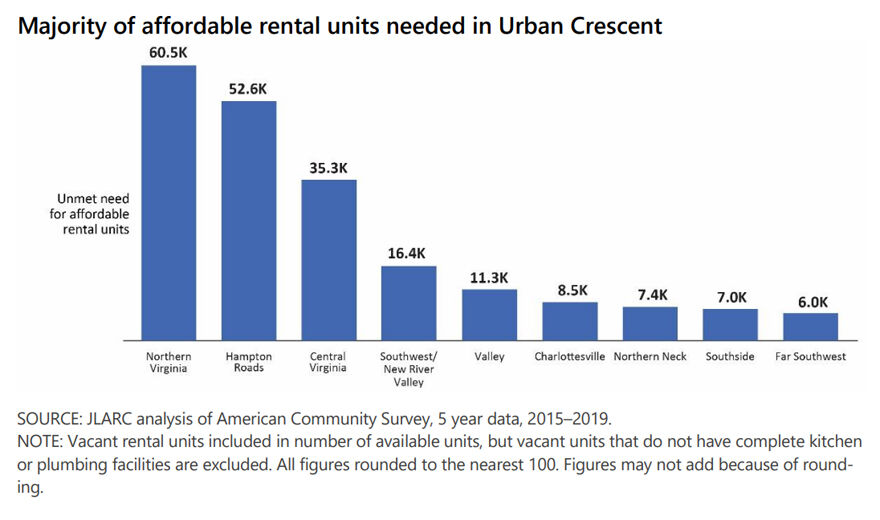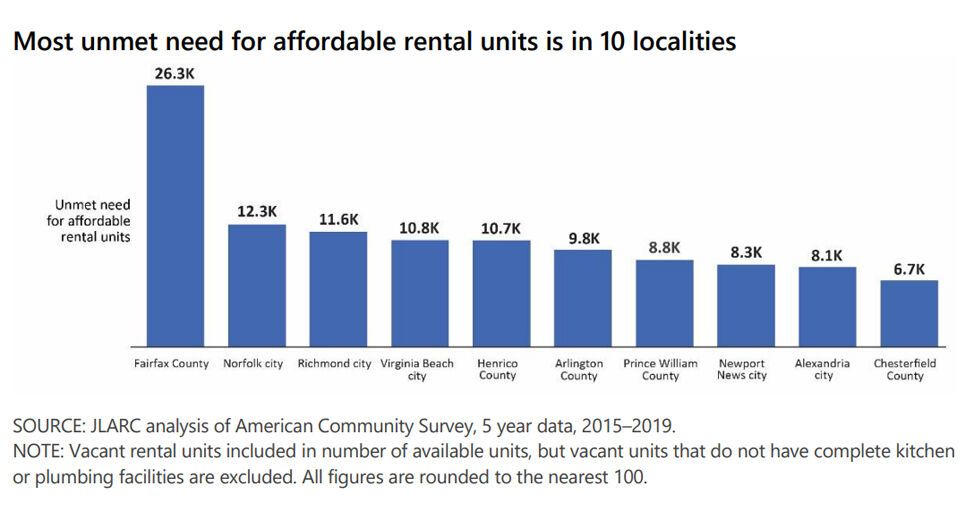It’s getting harder and harder for people to afford to live in Virginia.
That’s the finding of a legislative audit released this week to lawmakers in Richmond, which looked at the impact of soaring rents and home prices on residents around the commonwealth.
The audit argues that at least 200,000 new affordable rental housing units are needed in Virginia, but the biggest need is in the Northern Virginia area, where roughly 60,500 new affordable housing units are needed.

The report found that nearly 30% of Virginia households are what’s considered “cost-burdened” by housing, which means they pay at least 30% of their entire income on housing. About 15% pay more than half of their income to keep a roof over their head, making it harder to eat and stay healthy.
According to the audit:
“Ten localities with the largest need for affordable rental units account for over 50
percent of the state’s need for affordable rental units and have experienced relatively
high population growth. Four of these localities are in Northern Virginia, three are
in Hampton Roads, and three are in Central Virginia.”

About 44% of cost-burdened households are rented, while about 21% are owned, while those most affected live in the commonwealth’s population centers and are likely to have “common, essential occupations,” the report said.
The report includes a long list of recommendations, and many of them focus on what Virginia Housing can do.
Virginia Housing, a state agency that used to be known as the Virginia Housing Development Authority, helps commercial builders finance new apartment complexes, but also is supposed to help buyers afford first homes. The study found that the agency isn’t as competitive as it’s supposed to be with other commercial lenders.
Virginia also doesn’t take a statewide view of the affordable housing picture, something the report suggests should be done every five years, instead of simply relying on local governments to determine whether needs are being met. And, it said, zoning regulations put in place by local governments can make it even harder for commercial builders to build affordable residential units.








